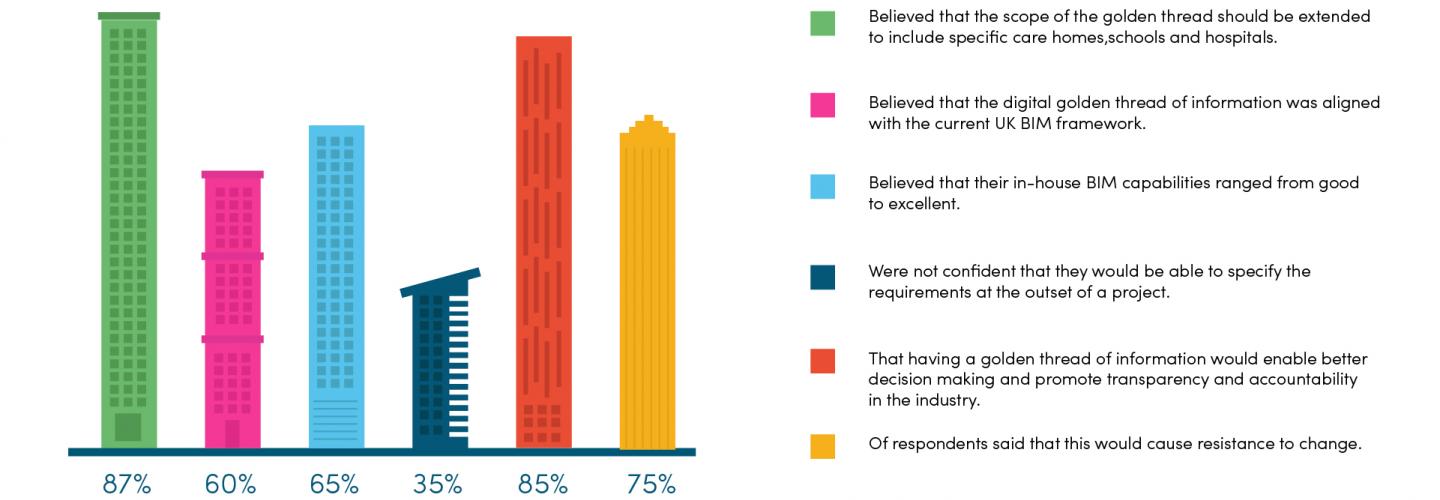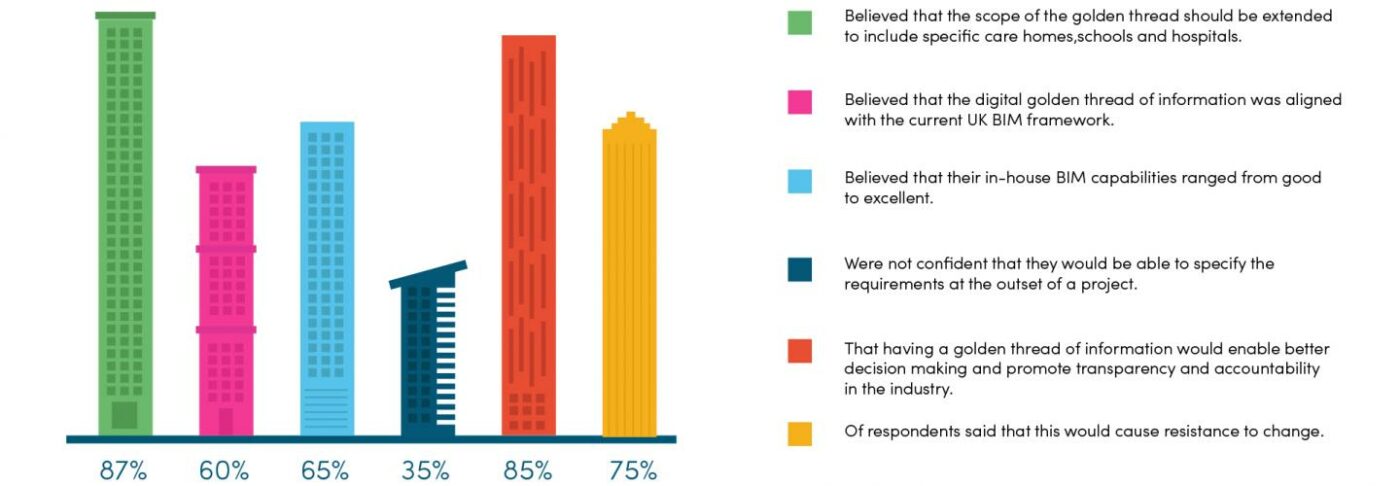
Since the Building a Safer Future report was published in 2018, the industry has been talking about the Golden Thread. The term was introduced by Dame Judith Hackitt, who conducted an independent review of the building regulations after the tragic Grenfell Tower fire and realised that the industry lacked a complete, accurate, updated record on the various construction and maintenance aspects of each building. Hence, the concept of the ‘Golden Thread of Information’ was introduced to increase accountability and transparency in the construction industry.
Recently, the Chartered Institute of Building (CIOB) and i3PT conducted a study to understand the capacity and capabilities of the built environment in the UK to create and manage the golden thread. Here are some of the key takeaways from the report on the study:
Understanding
The first segment of the study carried out was to gauge the industry’s understanding of the golden thread of information. Based on the responses collected during the study, it was clear that most respondents were confident in their understanding of the golden thread. However, less than half of the respondents believed that the appropriate people in their organisation understood the concept of the golden thread of information.
Further, the study showed that it was not clear where advice, support and resources related to the golden thread could be found, while 87% of the respondents believed that the scope of the golden thread should be extended to include specific care homes, schools and hospitals.
Responsibilities
The study further reveals that its respondents were unclear about who owns project data through the various design and construction stages of the project. Respondents seemed to be more comfortable assigning responsibilities to other parties, rather than accepting them themselves. However, respondents agreed that the government should not be responsible for covering all the cost associated with the technical investments, training and support. The costs should be split between clients, government and project delivery teams.
Capability
The study revealed that almost 60% of the respondents believed that the digital golden thread of information was aligned with the current UK BIM framework. Also, 65% believed that their in-house BIM capabilities ranged from good to excellent. They also estimated that it would take the industry a minimum of two years to introduce the golden thread for their projects as they believe that half of the facilities management teams and clients lack the required technical capabilities and the software to ensure that the data provided by design and construction teams meet the requirements. Another 35% of the respondents also said that they were not confident that they would be able to specify the requirements at the outset of a project.
Blockers
The last section in the study dealt with the various blockers that could hinder the implementation of the golden thread of information in the industry. The study revealed that the biggest blocker would be the culture within the industry, with 75% of respondents saying that this would cause resistance to change. They also felt that technology would be the least important concern in this case. They believe that clearer communication, legislation and more support is what is needed to overcome these blockers, as opposed to more time to prepare and additional financial support. While it was clear from the study that the industry did acknowledge the need for a golden thread of information, it is also aware of the various barriers and it would require constant support from the government to implement and standardise the new procedures. However, 85% of the respondents agreed that having a golden thread of information would enable better decision making and promote transparency and accountability in the industry.

